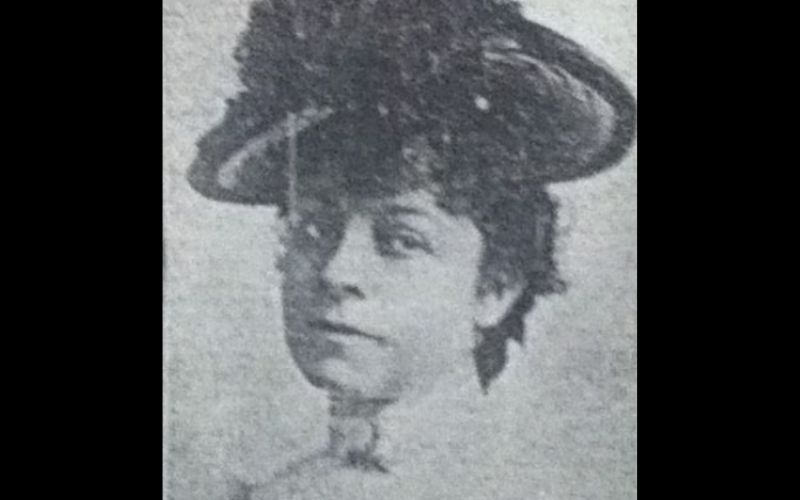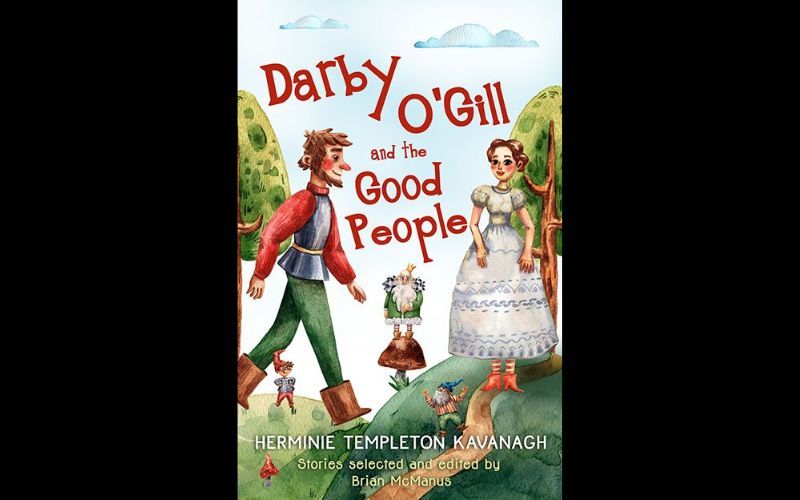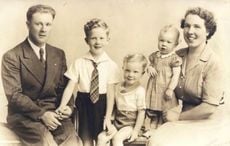The Banshee, or Bean Sídhe (her legend recently imbued by the popular film "The Banshees of Inisherin") is that female spirit of Irish folklore who heralds death by screaming, wailing, or shrieking.
The Irish word ‘caoine’ or, to use the anglified word ‘keening’, is seen as an evil forebearer of bad news.
But, have you ever thought of the Banshee as a strong feminist, a career-minded and sympathetic character who is simply affirming herself in the world, protecting what is hers, especially around Halloween night?
As this story unfolds, you’ll learn not to dare touch her sacred comb!
It is this wonderful message that is imparted by the stories of Herminie Templeton Kavanagh which began with the publication of "Darby O’Gill and the Good People" in December 1901. Her stories of Darby O’Gill and the fantastical world he inhabits are a triumph of female fortitude and ingenious creativity, as they overcome chaos in the midst of adversity and a terror of the otherworld, fairies and ghouls. Depicting a 19th-century Ireland steeped in the supernatural, it's a place where both humans and fairies collide, both refusing to be defeated in the quest for freedom to govern their own lives.
Irish woman Herminie Templeton Kavanagh was living in Chicago, estranged from her husband and grieving the loss of her only child. Struggling to support herself financially by working as a stenographer, she began tapping into the Irish fairy stories of her childhood and writing for children in the rapidly expanding Irish-American communities all across the US. Her thrilling, hilarious, and often poignant series of adventure stories are set around the famously haunted Slievenamon (which translates as Mountain of the Women) in Tipperary and feature both the scariest and nicest fairies of Irish folk tradition.
But there was more to Herminie’s work - as well as unleashing the magic and mayhem of fairies, the underworld, and of course the Banshee, to the delight of young readers, Kavanagh’s stories also explore women’s constrained lives in the male-dominated society of the early 20th century. The stories are not just about scary fairies - they also celebrate the loyalty, kindness, determination, and fierce intelligence of their female characters.

Herminie Templeton Kavanagh. (Public Domain)
Chief amongst them are Darby’s wife Bridget, her sister Maureen, and of course the Banshee herself, who is a nicer and impressive character than usually portrayed. Rather than being punished for engaging in matters outside of their homes, these women are applauded for stepping out into the world and positioning themselves as equal to men. Not perhaps as radical a message in many parts of the world today as it was when the stories were first written and published in 1901, but nonetheless, women’s rights are still deeply resonant.
The Walt Disney film "Darby O’Gill and the Little People" (starring Sean Connery) is very loosely based on Herminie’s book, however, the representation of the film’s female characters and their relationships with its male characters is extremely disappointing when one reads the original brilliantly subversive, proto-feminist stories.
In the 1959 film, a woman’s value is based solely upon her attractiveness. “Pretty Irish girl” Katie O’Gill cheerfully performs domestic chores leaving the exciting adventures to the men. The only female character with real power is the Banshee, the undoubted villain of the piece!
There is nothing remotely feminist about "Darby O’Gill and the Little People," which is not shocking or unexpected for a mainstream American children’s film of the mid-19th century.
Luckily, Herminie’s original message is again imparted in a new collection of Kavanagh’s tales, "Darby O’Gill and the Good People." Published by Mercier Press, Brian McManus has made some changes to the original six stories for presentation to modern readers but remains absolutely true to the spirit and intention of Herminie Templeton Kavanagh.
These delightful tales are genuine Irish storytelling, full of charm, wittiness, and poignancy, and will appeal to children and adults of all ages.

"Darby O'Gill and The Good People" by Brian McManus. (Mercier Press)
So, let's return to our beloved yet feared Banshee. In this extract from one of Herminie’s original stories “The Banshee’s Comb," King Brian Connors of the Good People brings Darby O’Gill to visit her in order to settle a dispute that has arisen between them; they’ve had a misunderstanding involving the Banshee’s sacred comb on Halloween night:
“Where is it you’ve brought me, King Brian?”
“To a place where no living man has ever ventured before. You’re a great man for firsts so you are, Darby! Now mind your manners if you please and don’t go stealing any other possessions from my darling death-messenger for this is where she dwells and you’re to show her some respect or I’ll regret bringing you at all.
“There’s never a dull moment with you around is there, Darby?” continued the King. “I thought that it would be some rich philosopher or the most renowned of the fairy folk who would finally outwit the banshee, who’s the cleverest of us all as far as I can tell, but it turns out to be none other than Darby O’Gill of Ballinderg in the county of Tipperary.”
“I wasn’t trying to outwit her, King,” insisted Darby, “It was all a misunderstanding.”
“I believe you, Darby,” says King Brian. “Let’s just hope that she does.”
Darby was blinking and shivering and growing more and more anxious beside the King, when suddenly, and without a sound, the banshee stood before them. She was all in white, and her yellow hair strealed to the ground. The weight and sorrow of ages were on her pale face.
"Is that you, Brian Connors?" she says.
“It is your humble and obedient servant, ma’am," says he.
“It’s a long while since I’ve seen you. Are you keeping well?”
“There’s not a bother on me. I’ve been away on a diplomatic mission visiting the German fairies for, when I heard tell that they live on an island in the River Ryan, I thought to myself that there must be some Irish fairies living amongst them there, Ryan being an Irish surname, but sure when I arrived didn’t it turn out that it’s not spelt Ryan like the surname but Rhine like – well, like the German river. Who would have known it?”
“Well, if you’d stopped off here on your way, you omadhaun, I might have given you a clue or two to put you right and save you heading off on a wild goose chase looking for Irish-German fairies!”
“They gave me a great welcome all the same. I’ll say that for the Germans. I’ve never eaten or drank so well.”
“If you don’t very much mind,” says the banshee, “we’ve important matters to attend to here. Isn’t the man you’ve brought to see me the man who grabbled me on Halloween night and gave me an awful fright and caused all the turmoil in his world and in mine? Have you heard that without my enchanted comb the ghosts have been running riot in the last place where I had it and that I haven’t been able to keep them under control because I can’t sing at all well without my comb? And don’t talk to me about the people who were due to die but haven’t been able to die since Halloween night without my keening to warn them. It’s all been most inconvenient!”
“It was a misunderstanding," says King Brian. "Well, misunderstanding or no misunderstanding," she says, "'tis the fine lot of trouble he's caused me and he’s taken his time to come here and make amends, and he a friend of the fairies" she says.
“He couldn’t come sooner,” says the King, “for he didn’t know the way without me and I’ve been in Germany looking for my Irish cousins if you remember rightly.”
The banshee let out the longest and deepest sigh of frustration that Darby had ever heard. “A woman needs reserves of patience that would fill the River Shannon three times over!” says she.
This article was submitted to the IrishCentral contributors network by a member of the global Irish community. To become an IrishCentral contributor click here.




Comments